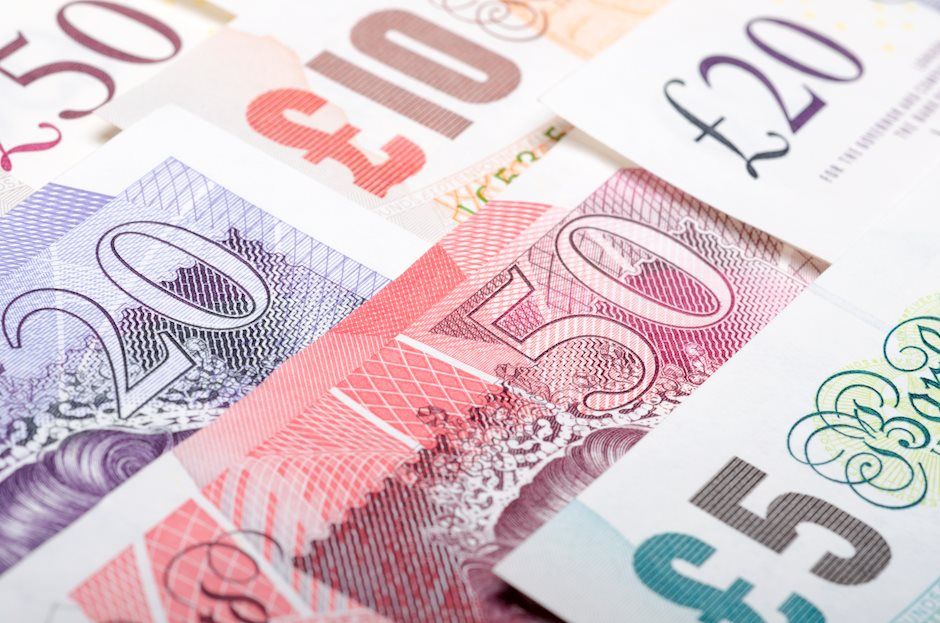Pound Sterling falls back as upbeat US Retail Sales strengthen US Dollar
- The Pound Sterling faces pressure as geopolitical tensions improve the appeal for safe-haven assets.
- UK’s employment and inflation data will influence speculation over BoE rate cuts.
- The UK economy is on track to come out of a technical recession.

The Pound Sterling (GBP) remains on the backfoot against the US Dollar in Monday’s early New York session. The near-term demand of the GBP/USD pair remains downbeat due to deepening Middle East tensions and speculation that the Bank of England (BoE) will start reducing interest rates sooner than the Federal Reserve (Fed).
Currently, financial markets anticipate that the BoE will begin lowering borrowing costs from August while the Fed is expected to follow the same from the September meeting.
This week, the United Kingdom’s employment and inflation data will freshly guide market expectations for the BoE as markets wonder when it could start its much-awaited rate-cut cycle. Investors will keenly focus on the wage growth data for three months ending February, which will be released on Tuesday, as it remains a key driver to the UK’s stubborn price pressures.
Daily digest market movers: Pound Sterling drops ahead of UK Employment
- The Pound Sterling hovers near more than a four-month low near 1.2430. Escalating Middle East tensions and receded bets that the Federal Reserve (Fed) will pivot to rate cuts in the June meeting have dented the appeal of risk-sensitive currencies.
- Hundreds of air strikes from Iran on Israel in retaliation to its attack on the Iranian embassy in Syria near Damascus, in which seven members of its Islamic Revolutionary Guard Corps (IRGC), including two generals, were killed, have spooked demand for risk-perceived currencies.
- Both scenarios—escalation in geopolitical tensions and faded Fed rate cut hopes—are favourable for the US Dollar, which is considered a safe-haven asset. The US Dollar Index (DXY), which tracks the US Dollar’s value against six major currencies, hovers near a fresh five-month high at 106.10.
- Meanwhile, the upbeat United States monthly Retail Sales data for March strengthens the appeal of the US dollar. The Retail Sales data, representing households’ spending grew at a stronger pace of 0.7% from expectations of 0.3%.
- On the United Kingdom’s front, improved monthly Gross Domestic Product (GDP) numbers have relieved Bank of England (BoE) policymakers. As expected, the monthly GDP for February rose by 0.1%, confirming that the economy is on course to come out of a technical recession registered in the second half of 2023. The economy also expanded by 0.3% in January, revised higher from 0.2%.
- Due to the improving economic outlook, the BoE could maintain a restrictive policy until they gain confidence that inflation will sustainably return to the 2% target.
Technical Analysis: Pound Sterling fails to recapture 1.2500
The Pound Sterling experiences a sharp sell-off after a breakdown of the psychological support at1.2500. The long-term trend of the GBP/USD pair has turned bearish as it has dropped below the 200-day Exponential Moving Average (EMA), which trades around 1.2570.
A breakdown of the Head and Shoulder chart pattern on a daily timeframe has indicated a bearish reversal. The neckline of the aforementioned chart pattern is plotted from December 8 low near 1.2500.
The 14-period Relative Strength Index (RSI) slips sharply below 40.00, indicating that a fresh bearish momentum has been triggered.
Risk sentiment FAQs
In the world of financial jargon the two widely used terms “risk-on” and “risk off'' refer to the level of risk that investors are willing to stomach during the period referenced. In a “risk-on” market, investors are optimistic about the future and more willing to buy risky assets. In a “risk-off” market investors start to ‘play it safe’ because they are worried about the future, and therefore buy less risky assets that are more certain of bringing a return, even if it is relatively modest.
Typically, during periods of “risk-on”, stock markets will rise, most commodities – except Gold – will also gain in value, since they benefit from a positive growth outlook. The currencies of nations that are heavy commodity exporters strengthen because of increased demand, and Cryptocurrencies rise. In a “risk-off” market, Bonds go up – especially major government Bonds – Gold shines, and safe-haven currencies such as the Japanese Yen, Swiss Franc and US Dollar all benefit.
The Australian Dollar (AUD), the Canadian Dollar (CAD), the New Zealand Dollar (NZD) and minor FX like the Ruble (RUB) and the South African Rand (ZAR), all tend to rise in markets that are “risk-on”. This is because the economies of these currencies are heavily reliant on commodity exports for growth, and commodities tend to rise in price during risk-on periods. This is because investors foresee greater demand for raw materials in the future due to heightened economic activity.
The major currencies that tend to rise during periods of “risk-off” are the US Dollar (USD), the Japanese Yen (JPY) and the Swiss Franc (CHF). The US Dollar, because it is the world’s reserve currency, and because in times of crisis investors buy US government debt, which is seen as safe because the largest economy in the world is unlikely to default. The Yen, from increased demand for Japanese government bonds, because a high proportion are held by domestic investors who are unlikely to dump them – even in a crisis. The Swiss Franc, because strict Swiss banking laws offer investors enhanced capital protection.
Author

Sagar Dua
FXStreet
Sagar Dua is associated with the financial markets from his college days. Along with pursuing post-graduation in Commerce in 2014, he started his markets training with chart analysis.


















